Australian Cattle Dog Beds
ACD Dogs Like Orthopedic Beds!
Introduction
The Australian Cattle Dog beds takes into account their health conditions, sleeping style and preferences. Orthopedic memory foam beds are the best choice.
The Australian Cattle Dog (ACD), also known as the “Blue Heeler” or “Red Heeler,” is a robust, hardworking breed with a rich history tied to the rugged landscapes of Australia. Originally bred in the 19th century to herd cattle over vast distances, ACDs are known for their intelligence, stamina, and strong work ethic.
Their energetic and independent nature makes them excellent companions for active owners who can provide both physical exercise and mental stimulation. The breed’s natural herding instinct can sometimes lead to quirky behaviors, such as nipping at heels, which is a trait that harks back to their days of moving stubborn cattle.
With a loyal and protective disposition, Australian Cattle Dogs are highly devoted to their families, often forming deep bonds with their owners. However, owning an ACD requires commitment and an understanding of their unique needs.
This includes proper socialization, consistent training, and ensuring they have a job or task to fulfill. While these dogs are incredibly smart and trainable, they can be independent and sometimes stubborn, so owners must be prepared to provide firm, patient guidance. Known for their longevity and general good health, they can live 12 to 16 years or longer with the right care.
Whether you’re looking for a working dog or an active companion, the Australian Cattle Dog is a loyal, energetic breed that thrives in an environment where they can use their natural instincts and intelligence to the fullest.
In this guide we share information about the Australian Cattle Dog. The topics include bed types, brands, facts, fun facts, health conditions, behavior concerns, tips for new owners, costs of ownership, and safe foods and foods to avoid.
Video: Blue Healer Dogs Pros and Cons
Blue healer dogs are known as Australian Cattle Dogs. This is an excellent video for potential new ACD owners to view before committing to owning one.
Best Bed Types
Here’s a list of the best bed types you can recommend to new owners of Australian Cattle Dogs:
-
Orthopedic Dog Beds:
- Best for: Senior dogs or those prone to joint issues like hip dysplasia.
- Why: These beds offer superior support with memory foam or orthopedic foam that helps relieve pressure on joints and provides extra comfort.
- CertiPUR-US Seal: When shopping for a memory foam dog bed, be sure to look for the CertiPUR-US seal. The seal means the materials used do not contain any toxins or chemicals that are harmful to humans or pets.
- Chew-Resistant Beds:
- Best for: Puppies or adult dogs that like to chew.
- Why: ACDs can be strong chewers, especially if they’re bored. Chew-resistant beds are made from durable materials like ballistic nylon to withstand their strong jaws.
- Cooling Beds:
- Best for: Dogs that run hot or live in warmer climates.
- Why: These beds use breathable fabrics or cooling gel inserts to help regulate body temperature, keeping dogs cool and comfortable.
- Raised Cot-Style Beds:
- Best for: Outdoor use or dogs that prefer firm support.
- Why: Raised beds keep dogs off the ground, providing better airflow and protecting them from hard surfaces. They’re also easy to clean and perfect for outdoor areas.
- Bolster Beds:
- Best for: Dogs that like extra support or to rest their head on raised sides.
- Why: Bolster beds feature cushioned edges that offer a sense of security, while the central area remains soft and padded, providing comfort for lounging and sleeping.
- Washable and Waterproof Beds:
- Best for: Active or outdoor-loving dogs.
- Why: These beds are easy to clean and protect against dirt, mud, and moisture, perfect for ACDs who love to be outdoors or after a day of activity.
Each of these bed types provides specific benefits that cater to the needs of Australian Cattle Dogs, offering comfort, durability, and support.
Australian Cattle Dogs for Various Dog Essentials
1. Beds:
- Big Barker: Known for high-quality orthopedic beds, ideal for large, active breeds like the Australian Cattle Dog. They offer great support for dogs prone to joint issues.
- K9 Ballistics: Offers durable, chew-resistant beds designed to withstand strong chewers, perfect for the active and sometimes destructive nature of ACDs.
- Coolaroo: Specializes in raised, cot-style beds that are great for outdoor use and provide excellent airflow to keep dogs cool.
2. Food:
- Orijen: Offers biologically appropriate, high-protein, grain-free formulas made from fresh ingredients, ideal for active breeds like the Australian Cattle Dog.
- Taste of the Wild: Known for grain-free, high-quality dog food that includes novel proteins like bison and venison, which can cater to the energy demands of ACDs.
- Wellness CORE: A highly regarded brand for grain-free, protein-rich dog food with natural ingredients and added nutrients to support overall health.
3. Toys:
- KONG: Known for durable, chew-resistant toys that also offer mental stimulation. KONG toys can be filled with treats to engage a Cattle Dog’s mind and keep them busy.
- Chuckit!: Specializes in interactive toys like ball launchers and frisbees, perfect for active outdoor play and exercise that ACDs thrive on.
- Nylabone: Great for heavy chewers, Nylabone provides durable chew toys that help satisfy ACDs’ natural chewing instincts and maintain dental health.
4. Collars and Leashes:
- Ruffwear: A premium brand for durable, outdoor-ready collars, harnesses, and leashes. Their products are designed to withstand rough use and are perfect for adventurous breeds.
- Kurgo: Offers strong, durable leashes and harnesses designed for active dogs, especially those that enjoy hiking or long outdoor adventures.
5. Crates:
- MidWest Homes for Pets: Provides sturdy, reliable wire crates with various sizes and features like dividers, which are great for crate training and offering a safe space.
- Frisco: Offers affordable yet durable crates and accessories, perfect for new dog owners looking for a well-rounded and budget-friendly option.
6. Grooming:
- FURminator: Specializes in de-shedding tools, which can help manage an ACD’s double coat, especially during shedding season.
- Earthbath: A trusted brand for all-natural, eco-friendly dog shampoos and grooming products that are gentle on the skin and coat.
Dog Bed Brands
Here’s a list of some of the best dog bed brands for new owners of Australian Cattle Dogs:
1. Big Barker
- Why: Renowned for orthopedic beds, Big Barker is designed specifically for large and active breeds like Australian Cattle Dogs. Their beds offer excellent support for dogs prone to joint issues and come with a 10-year guarantee.
2. K9 Ballistics
- Why: K9 Ballistics specializes in tough, chew-resistant beds that are perfect for heavy chewers. Their beds are designed to be durable and long-lasting, ideal for energetic dogs that may be rough on their bedding.
3. PetFusion
- Why: Known for its premium memory foam beds, PetFusion offers orthopedic support, ideal for active and aging dogs. Their beds are also durable and made with water-resistant, machine-washable covers.
4. FurHaven
- Why: Offers a wide variety of styles, from orthopedic to cooling and sofa-style beds. FurHaven provides comfortable beds at a more affordable price, making them a versatile option for different needs.
5. Kuranda
- Why: Kuranda offers raised, cot-style beds that are durable and easy to clean. These beds are great for outdoor use or for dogs that tend to run hot, offering airflow and joint support.
6. Brindle
- Why: Known for its memory foam and orthopedic beds, Brindle provides comfortable and supportive bedding, especially for dogs with joint problems or those needing extra cushioning.
7. The Dog’s Bed
- Why: Specializes in orthopedic beds with memory foam for joint support. Their beds come in various sizes and styles, perfect for providing comfort to active or aging Australian Cattle Dogs.
8. Coolaroo
- Why: Offers raised, cot-style beds that are perfect for outdoor or hot-weather use. The breathable fabric and sturdy construction make them ideal for active dogs who love to spend time outside.
9. BarksBar
- Why: Offers affordable yet high-quality orthopedic beds with soft, cushioned bolsters. They are designed to provide both comfort and support for dogs of all sizes.
10. Orvis
- Why: Orvis is known for luxury dog beds, offering memory foam and supportive designs with durable fabrics. They are ideal for dogs that need extra comfort and joint support.
These brands provide a range of bed options from orthopedic to chew-resistant, catering to the needs of energetic, active, and aging Australian Cattle Dogs.
Facts and Fun Facts About the ACD
Measurements:
- Size: Medium
- Group: Herding Group
- Height Male: 18 – 20 inches
- Height Female: 17 – 19 inches
- Weight: 35 – 50 lbs.
- Length: 28 – 33 inches
- Lifespan: 12 – 16 years
- Fully Grown: 12 – 18 months
- Colors: Blue, Blue Mottled, Blue Speckled, Red Speckled, Red Mottled
- Popularity: This breed is the 52nd most popular in the United States according to the American Kennel Club in 2023.
- Intelligence: This breed is ranked the 29th most intelligent according to Professor Stanley Coren at the University of British Columbia.
Facts
Here are some facts about the Australian Cattle Dog:
- Origin: The Australian Cattle Dog was developed in the 19th century in Australia to herd cattle over long distances across rough terrain.
- Nicknames: They are commonly known as “Blue Heelers” or “Red Heelers” depending on their coat color, referring to their habit of nipping at the heels of cattle.
- Breed Development: The breed is a mix of British working dogs, including the Collie and Dalmatian, with the native Australian Dingo, giving them their resilience and work ethic.
- Size: Australian Cattle Dogs are medium-sized, typically weighing between 35-50 pounds and standing about 17-20 inches tall.
- Coat: They have a dense double coat that is weather-resistant, ideal for working in the harsh Australian climate.
- Color: Their coats are either blue or red speckled, with possible markings such as masks, patches, or spots.
- Herding Ability: They are natural herders, bred specifically to move cattle and are known for their ability to control livestock by nipping at their heels.
- High Energy Levels: ACDs are extremely energetic and require a lot of exercise, making them a great match for active owners or those who can give them a job.
- Intelligence: They are highly intelligent and excel in obedience training, agility, and other canine sports, but they can also be independent and need consistent training.
- Lifespan: These dogs are known for their longevity, often living 12-16 years with good care.
- Health: While generally healthy, they are prone to some health issues like hip dysplasia, progressive retinal atrophy (PRA), and deafness.
- Loyalty and Protection: Australian Cattle Dogs are fiercely loyal to their families and are often protective, making them excellent watchdogs.
Fun Facts
- Record-Breaker: The oldest recorded dog, named “Bluey,” was an Australian Cattle Dog who lived to be 29 years and 5 months old!
- Color Change: Australian Cattle Dog puppies are born white (except for some markings) and develop their blue or red speckled coat as they grow older.
- Dingo Influence: Their wild Dingo heritage gives them a unique blend of independence and tenacity, traits that help them excel as herders.
- Famous in TV & Film: Australian Cattle Dogs have appeared in popular media, like the character “Blue” in the animated children’s show Bluey, and as characters in movies like Mad Max: Beyond Thunderdome.
- Double Coat: Their weather-resistant double coat makes them great outdoor workers, as it protects them from both heat and cold.
- Born for Speed: These dogs are incredibly agile and fast runners, able to cover large areas quickly, making them ideal for herding cattle over long distances.
- Herding Instinct: Their strong herding instinct sometimes extends to family members—they may try to “herd” kids or other pets by nipping at heels.
- Heel Nipping: The term “heeler” comes from their herding technique of gently nipping at the heels of cattle to guide them, which can be seen even in play.
- Unique Bark: Australian Cattle Dogs tend to be quieter than other herding breeds, often using body language rather than barking to move livestock.
- Ears that Speak: Their distinctive upright ears are very expressive, and their ear movements can communicate their mood, alertness, or intentions.
- Water Lovers: Many Australian Cattle Dogs love swimming and are naturally drawn to water, a great outlet for their boundless energy.
- Loyalty Tattoo: Some ACDs have a tattoo or mark inside their ear from breeders, helping identify them in case of loss—a practice still used in some parts of Australia.
Health Conditions
Here are some of the most common health conditions that can affect the Australian Cattle Dog:
- Hip Dysplasia: A genetic condition where the hip joint doesn’t develop properly, leading to arthritis and pain.
- Progressive Retinal Atrophy (PRA): A group of genetic diseases that cause the gradual deterioration of the retina, eventually leading to blindness.
- Deafness: Australian Cattle Dogs are prone to both congenital (present at birth) and age-related deafness, especially in those with merle or white markings.
- Elbow Dysplasia: A developmental condition affecting the elbow joints, leading to arthritis and lameness.
- Osteochondritis Dissecans (OCD): A joint disorder where cartilage does not properly develop, causing pain and mobility issues, especially in young, growing dogs.
- Patellar Luxation: A condition where the kneecap dislocates or moves out of its normal position, causing lameness or abnormal gait.
- Lens Luxation: A genetic condition in which the lens of the eye becomes displaced, potentially leading to vision problems or blindness.
- Cataracts: The clouding of the eye’s lens, which can impair vision and may eventually require surgery to correct.
- Hypothyroidism: A condition where the thyroid gland doesn’t produce enough hormones, leading to weight gain, lethargy, and skin problems.
- Distichiasis: A condition where extra eyelashes grow from abnormal locations on the eyelid, potentially causing irritation to the eye.
- Portosystemic Shunt (PSS): A liver condition where blood bypasses the liver, leading to toxin buildup and various symptoms, including poor growth and neurological issues.
- Allergies: Like many dogs, Australian Cattle Dogs can develop food or environmental allergies, causing skin irritations or gastrointestinal issues.
Regular vet checkups and proper care can help manage these potential health issues in Australian Cattle Dogs!
Behavior Concerns
Here’s a list of common behaviors you can share with new owners of Australian Cattle Dogs:
- Herding Instinct: They have a natural herding instinct and may try to herd people, other pets, or even objects by nipping at heels.
- High Energy Levels: Australian Cattle Dogs are very active and need daily physical exercise, including long walks, runs, or engaging play sessions.
- Strong Work Ethic: Bred to be working dogs, they thrive when they have a job to do, whether it’s herding, agility training, or even learning new tricks.
- Loyalty: They form strong bonds with their family members and are very loyal, often following their owners around or sticking close to them.
- Protective Nature: They can be naturally protective of their family and territory, making them excellent watchdogs.
- Independent Thinking: While intelligent, they can be independent and sometimes stubborn, so consistent training and firm leadership are important.
- Alertness: ACDs are always on alert, which means they are quick to notice new sounds, people, or changes in their environment, sometimes leading to barking or watchful behavior.
- Curiosity and Exploration: Their curiosity often leads them to explore new areas, so owners should ensure that their space is secure to prevent them from wandering off.
- Playfulness: Despite their serious work ethic, ACDs love to play, whether it’s with toys, other dogs, or engaging with their owners in games.
- Mental Stimulation Needs: They require regular mental stimulation through puzzles, interactive toys, or training, as they can become bored easily.
- Chewing and Digging: If they don’t get enough exercise or stimulation, ACDs may resort to destructive behaviors like chewing or digging out of frustration.
- Good with Training: They are highly trainable, but need firm, consistent, and positive reinforcement-based training to reach their potential.
These behaviors reflect their active, intelligent, and loyal nature, and new owners should be prepared to meet their physical and mental needs.
Tips for New Owners
Here’s a list of tips you can share with new owners of Australian Cattle Dogs:
- Provide Plenty of Exercise: ACDs need at least 1-2 hours of physical exercise daily to burn off their high energy levels. Activities like running, hiking, or agility training are great outlets.
- Mental Stimulation is Key: Keep their minds engaged with puzzle toys, interactive games, or advanced obedience training. A bored ACD can become destructive.
- Early Socialization: Start socializing your ACD with different people, dogs, and environments from a young age to help them develop into a well-adjusted adult dog.
- Consistent Training: Use positive reinforcement and be consistent with training. ACDs are intelligent but can be stubborn, so clear boundaries and consistent commands are essential.
- Give Them a Job: These dogs thrive when they have a purpose. Whether it’s herding, agility, or even household tasks, giving them a job keeps them satisfied and fulfilled.
- Prevent Herding Behavior with Kids: ACDs may instinctively try to herd children by nipping at their heels. Teach them boundaries early to prevent this behavior.
- Provide a Secure Yard: Australian Cattle Dogs are curious and can be escape artists. Make sure your yard is securely fenced to prevent them from wandering off.
- Crate Training: Start crate training early to give them a safe space and help with house training. It also provides structure and a sense of routine.
- Watch for Health Issues: Be aware of common health conditions like hip dysplasia and progressive retinal atrophy. Regular vet checkups are important for early detection.
- Grooming Needs: ACDs have a weather-resistant double coat, so brushing once a week is usually sufficient to keep it healthy. During shedding season, more frequent brushing may be needed.
- Set Up Playdates: ACDs enjoy playing with other dogs, so arranging playdates or taking them to dog parks can help with socialization and burn off extra energy.
- Stay Patient and Firm: ACDs are smart but can have a strong will. Patience, firmness, and positive reinforcement will go a long way in shaping a well-behaved dog.
These tips will help new owners provide the structure, activity, and care that Australian Cattle Dogs need to thrive!
Costs of Ownership
Here’s a breakdown of the average costs associated with owning an Australian Cattle Dog:
- Purchase Price:
- From a Reputable Breeder: $500 to $2,000, depending on the breeder’s reputation, bloodline, and location.
- Adoption Fees: $150 to $500 from a rescue or shelter.
- Initial Supplies:
- Crate: $50 to $150
- Bedding: $30 to $100
- Food and Water Bowls: $10 to $30
- Collar and Leash: $20 to $40
- Toys and Chews: $30 to $100
- Grooming Supplies: $20 to $50
- Veterinary Costs:
- Initial Vet Checkup and Vaccinations: $100 to $300
- Spaying/Neutering: $200 to $500
- Microchipping: $25 to $50
- Annual Vet Visits: $200 to $400
- Heartworm, Flea, and Tick Prevention: $100 to $300 per year
- Food Costs:
- High-Quality Dog Food: $30 to $60 per month (around $360 to $720 per year).
- Training:
- Puppy Classes: $100 to $200 for a 6-8 week course.
- Obedience Training: $30 to $80 per session, or $500 to $1,000 for more advanced training courses.
- Grooming:
- Basic Grooming (if done professionally): $30 to $60 per session, although ACDs have low grooming needs, so this may only be required occasionally.
- Pet Insurance (optional):
- $20 to $50 per month, depending on the coverage.
- Miscellaneous Costs:
- Licensing: $10 to $20 annually.
- Pet Sitting or Boarding: $20 to $50 per day if you travel.
Total Estimated Annual Costs:
- First Year: $1,500 to $3,500 (includes initial purchases, vet visits, and training).
- Ongoing Annual Costs: $1,000 to $2,000 (for food, vet care, and other essentials).
These estimates can vary based on location, specific needs, and lifestyle choices, but they offer a good overview of the costs involved in owning an Australian Cattle Dog.
Safe Foods and Foods to Avoid
Here’s a list of safe foods and foods to avoid for Australian Cattle Dogs: Safe Foods:
- Lean Meats: Chicken, turkey, and lean cuts of beef (cooked, unseasoned).
- Fish: Salmon and sardines are good sources of omega-3 fatty acids (cooked, boneless).
- Eggs: Cooked eggs are a great source of protein.
- Fruits (in moderation):
- Apples (remove seeds and core)
- Blueberries
- Bananas
- Strawberries
- Watermelon (seedless)
- Vegetables:
- Carrots
- Green beans
- Sweet potatoes (cooked)
- Peas
- Spinach
- Plain, Cooked Rice or Pasta: A good source of carbohydrates.
- Pumpkin: Great for digestion, especially if your dog has an upset stomach (plain, canned, or cooked).
- Plain, Unsweetened Yogurt: A source of probiotics, which can help digestion.
- Peanut Butter: A popular treat (ensure it’s free from xylitol, a toxic ingredient).
- Oatmeal: A source of fiber, especially beneficial for dogs with grain sensitivities.
Foods to Avoid:
- Chocolate: Contains theobromine, which is toxic to dogs.
- Grapes and Raisins: Can cause kidney failure in dogs.
- Onions and Garlic: Can cause gastrointestinal irritation and damage red blood cells.
- Avocados: Contains persin, which can be toxic in large amounts.
- Macadamia Nuts: Highly toxic to dogs, causing vomiting, tremors, and lethargy.
- Xylitol (artificial sweetener): Found in sugar-free gum and some peanut butters, it can cause insulin release and result in hypoglycemia.
- Alcohol: Can cause vomiting, diarrhea, and even death in severe cases.
- Caffeine: Found in coffee, tea, and some sodas, it is toxic to dogs.
- Bones from Cooked Meat: Can splinter and cause choking or digestive tract injuries.
- Raw Dough: Yeast dough can expand in a dog’s stomach, causing bloat or alcohol poisoning.
- Fat Trimmings: Can cause pancreatitis in dogs.
- Raw Eggs or Meat: Risk of salmonella or E. coli infections, unless carefully prepared.
By sticking to safe foods and avoiding harmful ones, new owners can keep their Australian Cattle Dog healthy and happy!
Conclusion
The Australian Cattle Dog is a breed that embodies intelligence, loyalty, and an undeniable work ethic, making them a unique and rewarding choice for the right owner. However, they are not suited to every household.
Their high energy levels, combined with a strong need for mental and physical stimulation, make them best suited for active individuals or families who can dedicate time to their exercise and engagement.
For owners willing to provide these outlets, the ACD will become an incredibly loyal and hardworking companion. Training and early socialization are essential for Australian Cattle Dogs to channel their independent and herding instincts in positive ways.
Their natural drive to herd may extend to family members or other pets, which can be managed through consistent training. Because of their sharp intelligence, ACDs excel in activities like agility, obedience, and even advanced trick training, which keeps them mentally challenged and content.
Health-wise, the Australian Cattle Dog is generally a hardy breed, but owners should be aware of potential issues like hip dysplasia, progressive retinal atrophy (PRA), and deafness. Regular veterinary checkups, a balanced diet, and maintaining a healthy exercise routine are key to ensuring a long and happy life for these dogs.
Ultimately, the Australian Cattle Dog thrives when given a purpose, whether it be through work, sport, or simply being an active member of the family.
With the right care, patience, and training, they will reward their owners with loyalty, affection, and a companionship that reflects their storied heritage as Australia’s hardiest herding dog.
You can check out the other dog breed information by clicking HERE!
Shop Dog Beds
Shop dog beds for your dog by selecting or clicking on any bed of choice. You will be taken to Amazon where you can read customer reviews and answered questions and place the order.
As an Amazon Associate, I earn from qualifying purchases. Your purchase price is the same as if you shop directly on Amazon.
The price at time of publish is included below to give you an idea of what the price is; however, it is subject to change.
Shop Rectangle Dog Beds

Laifug Large Grey Orthopedic Rectangle Bed
Price At Time of Publish $130.00
Laifug Large Blue Orthopedic Rectangle Bed
Price At Time of Publish $130.00 $110.00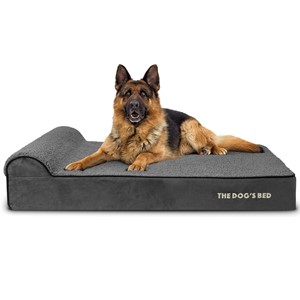
The Dogs Bed XL Grey Orthopedic Rectangle Bed
Price At Time of Publish $130.00 $185.00

KOPEKS Jumbo Orthopedic Rectangular Bed
Price At Time of Publish $130.00 $110.00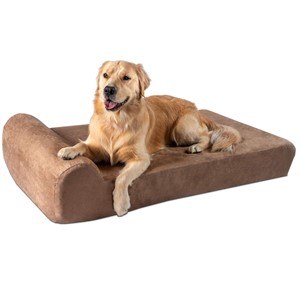
Big Barker XL Orthopedic Rectangle Bed
Price At Time of Publish $130.00 $240.00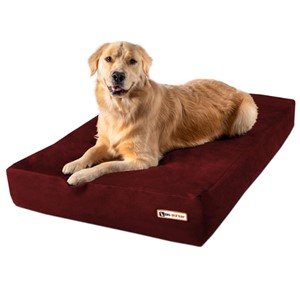
Big Barker XL Burgundy Orthopedic Rectangle Bed
Price At Time of Publish $130.00 $200.00

Serta XL Brown Orthopedic Rectangle Bed
Price At Time of Publish $130.00 $80.00
DogBed4Less XL Blue Orthopedic Rectangle Bed
Price At Time of Publish $130.00 $80.00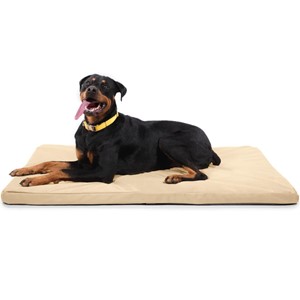
K9 Ballistics XL Sandstone Orthopedic Crate Pad
Price At Time of Publish $130.00 $159.00
Shop Bolster Dog Beds

Brindle XL Gray Orthopedic Bolster Bed
Price At Time of Publish $130.00 $79.00
Bedsure XL Blue Orthopedic Bolster Bed
Price At Time of Publish $130.00 $76.00
Bedsure XL Grey Orthopedic Bolster Bed
Price At Time of Publish $130.00 $60.00
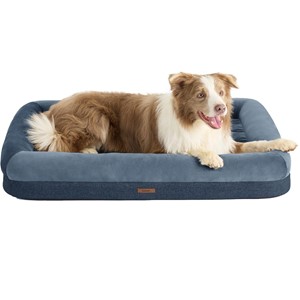
Lesure XL Navy Orthopedic Bolster Bed
Price At Time of Publish $130.00 $40.00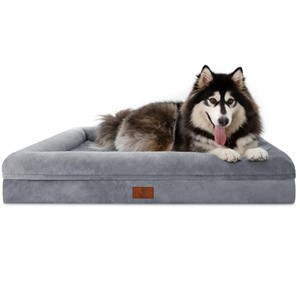
Yiruka XL Grey Orthopedic Bolster Bed
Price At Time of Publish $130.00 $55.00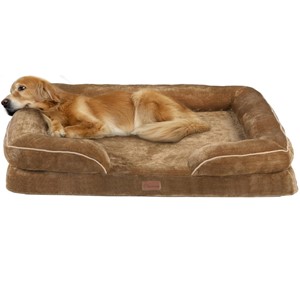
Yitahome XL Brown Orthopedic Bolster Bed
Price At Time of Publish $130.00 $37.00
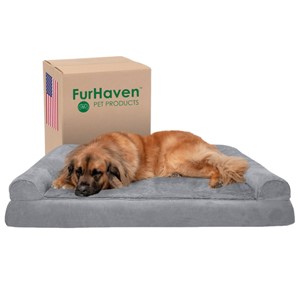
Furhaven XL Gray Orthopedic Bolster Bed
Price At Time of Publish $130.00 $130.00
PetFusion XL Grey Orthopedic Bolster Bed
Price At Time of Publish $130.00 $60.00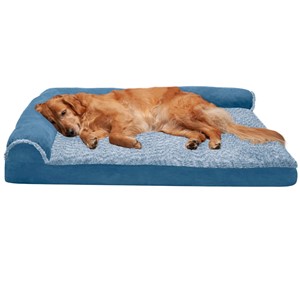
Furhaven Jumbo Blue Orthopedic Bolster Bed
Price At Time of Publish $130.00 $60.00
Shop Elevated Dog Beds
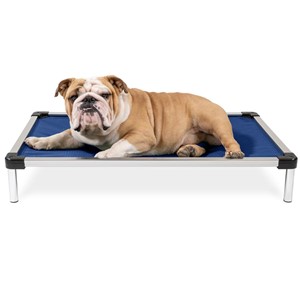
K9 Ballistics Chew Proof Elevated Small Bed
Price At Time of Publish $130.00 $129.00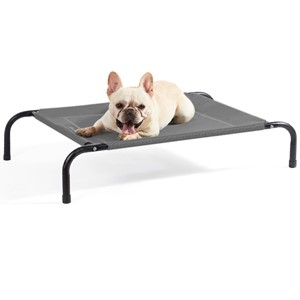
Bedsure Medium Elevated Dog Bed
Price At Time of Publish $130.00 $33.00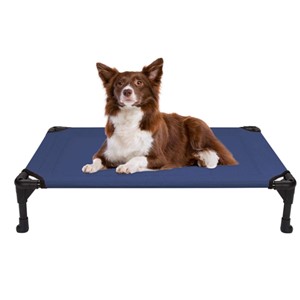
Veehoo Medium Elevated Dog Bed
Price At Time of Publish $130.00 $45.00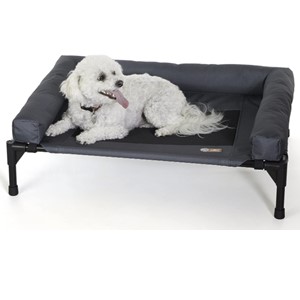
K&H Pet Products Elevated Bolster Dog Bed
Price At Time of Publish $130.00 $57.00
Kuranda Elevated Chew Proof Small Dog Bed
Price At Time of Publish $130.00 $134.00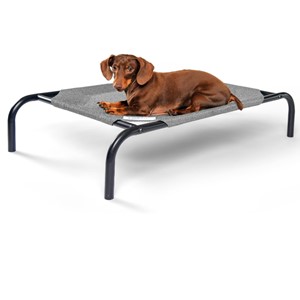
Coolaroo Small Elevated Dog Bed
Price At Time of Publish $130.00 $21.00
Related Articles
Below are some other articles you may be interested in reading. Just select on the topic of interest to learn more about it.
- Best Healthy Dog Food Brands
- Christmas Presents for My Dog
- Crates for Dogs
- Critical Signs Your Dog Needs Help
- Dog Training Techniques
- How To Train a Puppy
- Positive Reinforcement for Dog Training
- Puppy Proofing Your House
- Training Dog with Treats
- Using Alexa for Dog Behaviors
Go back to the Dog Luxury Beds home page.

